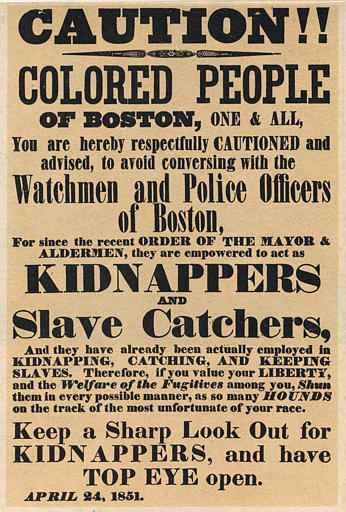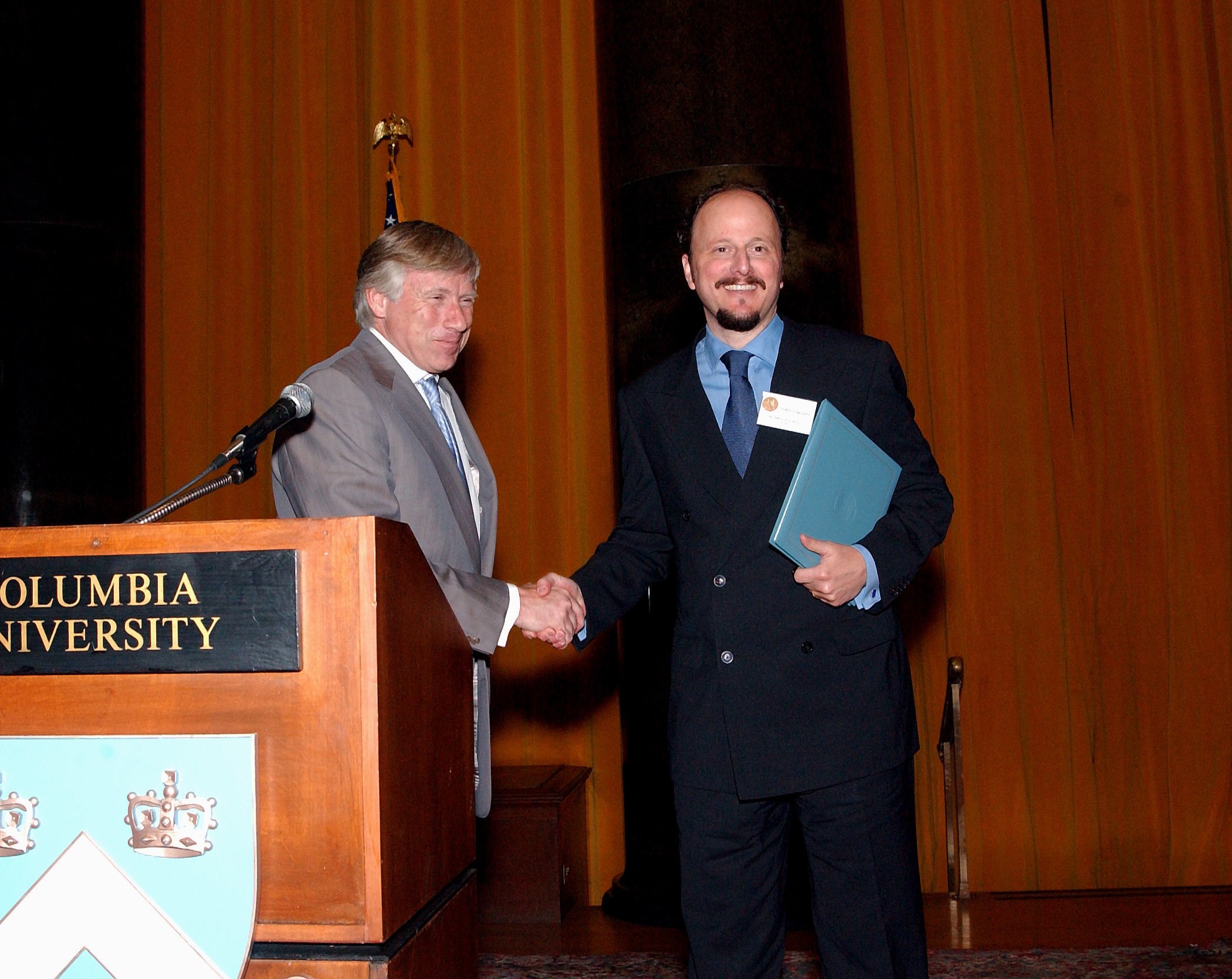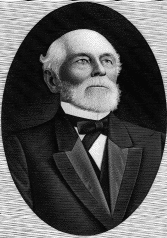|
Henrietta Wood
Henrietta Wood (c. 1819 – 1912) was an American enslaved woman who won the largest verdict ever awarded for slavery reparations in the United States. Born as a slave in Kentucky, but freed as an adult, Wood was later kidnapped and sold back into slavery. After the American Civil War, Wood successfully sued her kidnapper and won financial damages. Biography Wood was born into slavery with the Tousey family on a farm in northern Kentucky sometime between 1818 and 1820. Moses Tousey died in 1834, and Wood was sold to Louisville merchant Henry Forsyth for $700, for whom she did housework. She was sold again to another Louisville merchant, William Cirode, who was a French immigrant. Cirode took her to New Orleans. After Cirode returned to France in 1844, his wife, Jane Cirode, brought Wood to Cincinnati in Ohio, a free state. Jane Cirode registered Wood as free in 1848. In the following years a free woman, Wood was a domestic worker in the Cincinnati area. In 1853, William Cir ... [...More Info...] [...Related Items...] OR: [Wikipedia] [Google] [Baidu] |
Kentucky
Kentucky ( , ), officially the Commonwealth of Kentucky, is a state in the Southeastern region of the United States and one of the states of the Upper South. It borders Illinois, Indiana, and Ohio to the north; West Virginia and Virginia to the east; Tennessee to the south; and Missouri to the west. Its northern border is defined by the Ohio River. Its capital is Frankfort, and its two largest cities are Louisville and Lexington. Its population was approximately 4.5 million in 2020. Kentucky was admitted into the Union as the 15th state on June 1, 1792, splitting from Virginia in the process. It is known as the "Bluegrass State", a nickname based on Kentucky bluegrass, a species of green grass found in many of its pastures, which has supported the thoroughbred horse industry in the center of the state. Historically, it was known for excellent farming conditions for this reason and the development of large tobacco plantations akin to those in Virginia and North Carolina i ... [...More Info...] [...Related Items...] OR: [Wikipedia] [Google] [Baidu] |
Fugitive Slave Act Of 1850
The Fugitive Slave Act or Fugitive Slave Law was passed by the United States Congress on September 18, 1850, as part of the Compromise of 1850 between Southern interests in slavery and Northern Free-Soilers. The Act was one of the most controversial elements of the 1850 compromise and heightened Northern fears of a slave power conspiracy. It required that all escaped slaves, upon capture, be returned to the slaver and that officials and citizens of free states had to cooperate. Abolitionists nicknamed it the "Bloodhound Bill", after the dogs that were used to track down people fleeing from slavery. The Act contributed to the growing polarization of the country over the issue of slavery, and was one of the factors that led to the Civil War. Background By 1843, several hundred enslaved people a year escaped to the North successfully, making slavery an unstable institution in the border states. The earlier Fugitive Slave Act of 1793 was a Federal law that was written w ... [...More Info...] [...Related Items...] OR: [Wikipedia] [Google] [Baidu] |
19th-century African-American Women
The 19th (nineteenth) century began on 1 January 1801 ( MDCCCI), and ended on 31 December 1900 ( MCM). The 19th century was the ninth century of the 2nd millennium. The 19th century was characterized by vast social upheaval. Slavery was abolished in much of Europe and the Americas. The First Industrial Revolution, though it began in the late 18th century, expanding beyond its British homeland for the first time during this century, particularly remaking the economies and societies of the Low Countries, the Rhineland, Northern Italy, and the Northeastern United States. A few decades later, the Second Industrial Revolution led to ever more massive urbanization and much higher levels of productivity, profit, and prosperity, a pattern that continued into the 20th century. The Islamic gunpowder empires fell into decline and European imperialism brought much of South Asia, Southeast Asia, and almost all of Africa under colonial rule. It was also marked by the collapse of the large ... [...More Info...] [...Related Items...] OR: [Wikipedia] [Google] [Baidu] |
19th-century American Slaves
The 19th (nineteenth) century began on 1 January 1801 ( MDCCCI), and ended on 31 December 1900 ( MCM). The 19th century was the ninth century of the 2nd millennium. The 19th century was characterized by vast social upheaval. Slavery was abolished in much of Europe and the Americas. The First Industrial Revolution, though it began in the late 18th century, expanding beyond its British homeland for the first time during this century, particularly remaking the economies and societies of the Low Countries, the Rhineland, Northern Italy, and the Northeastern United States. A few decades later, the Second Industrial Revolution led to ever more massive urbanization and much higher levels of productivity, profit, and prosperity, a pattern that continued into the 20th century. The Islamic gunpowder empires fell into decline and European imperialism brought much of South Asia, Southeast Asia, and almost all of Africa under colonial rule. It was also marked by the collapse of the large S ... [...More Info...] [...Related Items...] OR: [Wikipedia] [Google] [Baidu] |
Pulitzer Prize
The Pulitzer Prize () is an award for achievements in newspaper, magazine, online journalism, literature, and musical composition within the United States. It was established in 1917 by provisions in the will of Joseph Pulitzer, who had made his fortune as a newspaper publisher, and is administered by Columbia University. Prizes are awarded annually in twenty-one categories. In twenty of the categories, each winner receives a certificate and a US$15,000 cash award (raised from $10,000 in 2017). The winner in the public service category is awarded a gold medal. Entry and prize consideration The Pulitzer Prize does not automatically consider all applicable works in the media, but only those that have specifically been entered. (There is a $75 entry fee, for each desired entry category.) Entries must fit in at least one of the specific prize categories, and cannot simply gain entrance for being literary or musical. Works can also be entered only in a maximum of two categories, ... [...More Info...] [...Related Items...] OR: [Wikipedia] [Google] [Baidu] |
Rice University
William Marsh Rice University (Rice University) is a Private university, private research university in Houston, Houston, Texas. It is on a 300-acre campus near the Houston Museum District and adjacent to the Texas Medical Center. Rice is ranked among the top universities in the United States. Opened in 1912 as the Rice Institute after the murder of its namesake William Marsh Rice, Rice is a research university with an undergraduate focus. Its emphasis on undergraduate education is demonstrated by its 6:1 student-faculty ratio. The university has a Research I university, very high level of research activity, with $156 million in sponsored research funding in 2019. Rice is noted for its applied science programs in the fields of artificial heart research, structural chemical analysis, signal processing, space science, and nanotechnology. Rice has been a member of the Association of American Universities since 1985 and is Carnegie Classification of Institutions of Higher Education ... [...More Info...] [...Related Items...] OR: [Wikipedia] [Google] [Baidu] |
Northwestern University Pritzker School Of Law
Northwestern University Pritzker School of Law is the law school of Northwestern University, a Private university, private research university. It is located on the university's Chicago campus. Northwestern Law has been ranked among the top 14, or Law school rankings in the United States#Top 14 law schools, "T14" law schools, since ''U.S. News & World Report'' began publishing its annual rankings. Northwestern Law is among the top ten most selective law schools. Its performance in the job market has also contributed to its prestige. Founded in 1859, it was the first law school established in Chicago. Notable alumni include numerous governors of several states; Arthur Goldberg, United States Supreme Court Justice, United States Supreme Court justice; Adlai Stevenson II, Adlai Stevenson, governor of Illinois, cabinet secretary, and Democratic presidential candidate; John Paul Stevens, United States Supreme Court justice; Newton Minow, former chairman of the Federal Communications ... [...More Info...] [...Related Items...] OR: [Wikipedia] [Google] [Baidu] |
The Washington Post
''The Washington Post'' (also known as the ''Post'' and, informally, ''WaPo'') is an American daily newspaper published in Washington, D.C. It is the most widely circulated newspaper within the Washington metropolitan area and has a large national audience. Daily broadsheet editions are printed for D.C., Maryland, and Virginia. The ''Post'' was founded in 1877. In its early years, it went through several owners and struggled both financially and editorially. Financier Eugene Meyer purchased it out of bankruptcy in 1933 and revived its health and reputation, work continued by his successors Katharine and Phil Graham (Meyer's daughter and son-in-law), who bought out several rival publications. The ''Post'' 1971 printing of the Pentagon Papers helped spur opposition to the Vietnam War. Subsequently, in the best-known episode in the newspaper's history, reporters Bob Woodward and Carl Bernstein led the American press's investigation into what became known as the Watergate scandal ... [...More Info...] [...Related Items...] OR: [Wikipedia] [Google] [Baidu] |
Lafcadio Hearn
, born Patrick Lafcadio Hearn (; el, Πατρίκιος Λευκάδιος Χέρν, Patríkios Lefkádios Chérn, Irish language, Irish: Pádraig Lafcadio O'hEarain), was an Irish people, Irish-Greeks, Greek-Japanese people, Japanese writer, translator, and teacher who introduced the culture and literature of Japan to the Western world, West. His writings offered unprecedented insight into Japanese culture, especially his collections of Japanese mythology, legends and kwaidan, ghost stories, such as ''Kwaidan: Stories and Studies of Strange Things''. Before moving to Japan and becoming a Japanese citizen, he worked as a journalist in the United States, primarily in Cincinnati and New Orleans. His writings about New Orleans, based on his decade-long stay there, are also well-known. Hearn was born on the Greek island of Lefkada, after which a complex series of conflicts and events led to his being moved to Dublin, where he was abandoned first by his mother, then his father, and f ... [...More Info...] [...Related Items...] OR: [Wikipedia] [Google] [Baidu] |
Restitution
The law of restitution is the law of gains-based recovery, in which a court orders the defendant to ''give up'' their gains to the claimant. It should be contrasted with the law of compensation, the law of loss-based recovery, in which a court orders the defendant to ''pay'' the claimant for their loss. Evolving Meaning ''American Jurisprudence'' 2d edition notes: Legal vs Equitable Remedy Restitution may be either a legal remedy or an equitable remedy, "depend ngupon the basis for the plaintiff's claim and the nature of the underlying remedies sought". Generally, restitution and equitable tracing is an equitable remedy when the money or property wrongfully in the possession of defendant is traceable (i.e., can be tied to "particular funds or property"). In such a case, restitution comes in the form of a constructive trust or equitable lien. Where the particular property at issue cannot be particularly identified, restitution is a legal remedy. This occurs, for example ... [...More Info...] [...Related Items...] OR: [Wikipedia] [Google] [Baidu] |
Federal Tribunals In The United States
Federal tribunals in the United States are those tribunals established by the federal government of the United States for the purpose of resolving disputes involving or arising under federal laws, including questions about the constitutionality of such laws. Such tribunals include both Article III tribunals (federal courts) as well as adjudicative entities which are classified as Article I or Article IV tribunals. Some of the latter entities are also formally denominated as courts, but they do not enjoy certain protections afforded to Article III courts. These tribunals are described in reference to the article of the United States Constitution from which the tribunal's authority stems. The use of the term "tribunal" in this context as a blanket term to encompass both courts and other adjudicative entities comes from section 8 of Article I of the Constitution, which expressly grants Congress the power to constitute tribunals inferior to the Supreme Court of the United States. ... [...More Info...] [...Related Items...] OR: [Wikipedia] [Google] [Baidu] |
Union Army
During the American Civil War, the Union Army, also known as the Federal Army and the Northern Army, referring to the United States Army, was the land force that fought to preserve the Union (American Civil War), Union of the collective U.S. state, states. It proved essential to the preservation of the United States as a working, viable republic. The Union Army was made up of the permanent Regular Army (United States), regular army of the United States, but further fortified, augmented, and strengthened by the many temporary units of dedicated United States Volunteers, volunteers, as well as including those who were drafted in to service as Conscription in the United States, conscripts. To this end, the Union Army fought and ultimately triumphed over the efforts of the Confederate States Army in the American Civil War. Over the course of the war, 2,128,948 men enlisted in the Union Army, including 178,895 United States Colored Troops, colored troops; 25% of the white men who s ... [...More Info...] [...Related Items...] OR: [Wikipedia] [Google] [Baidu] |









